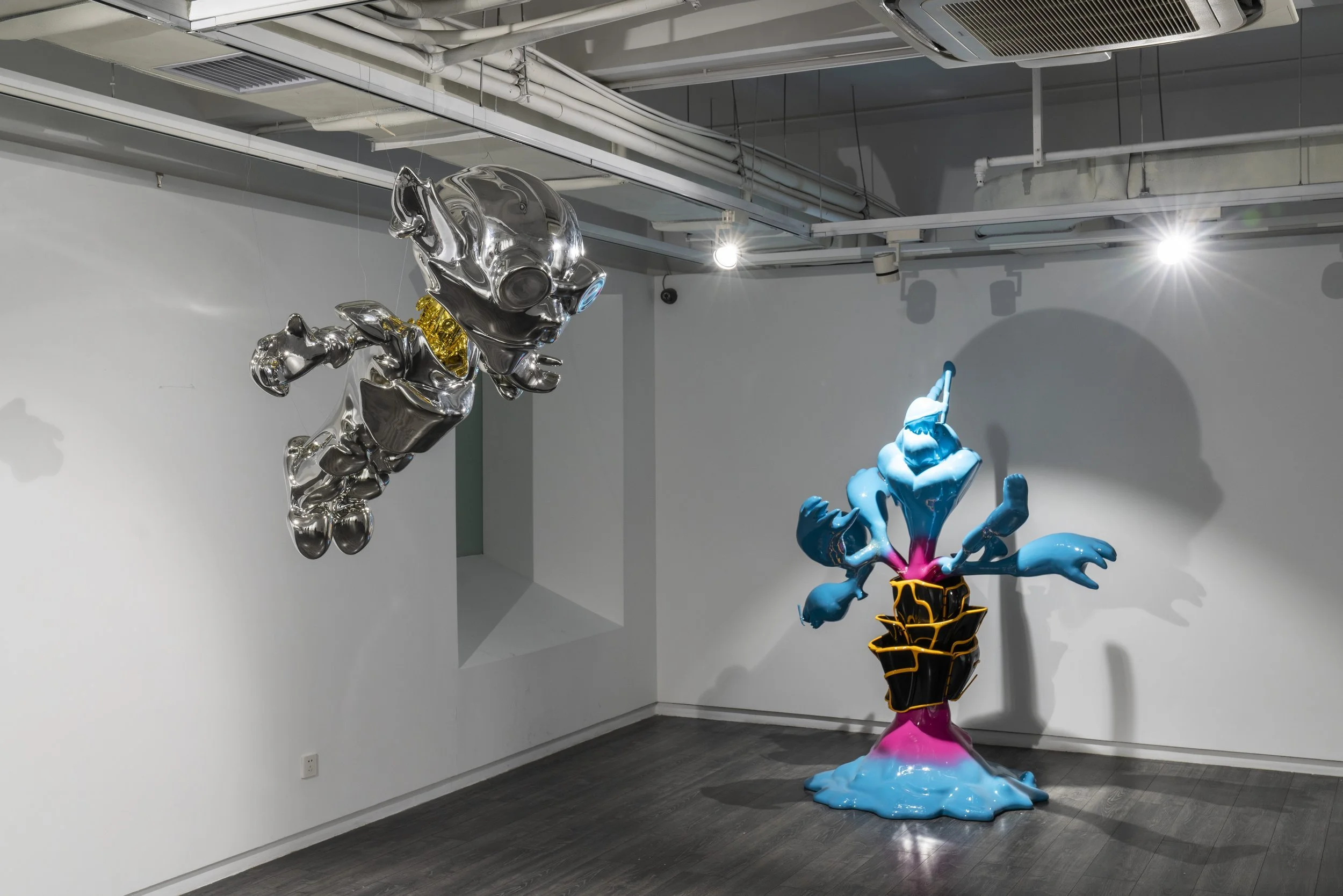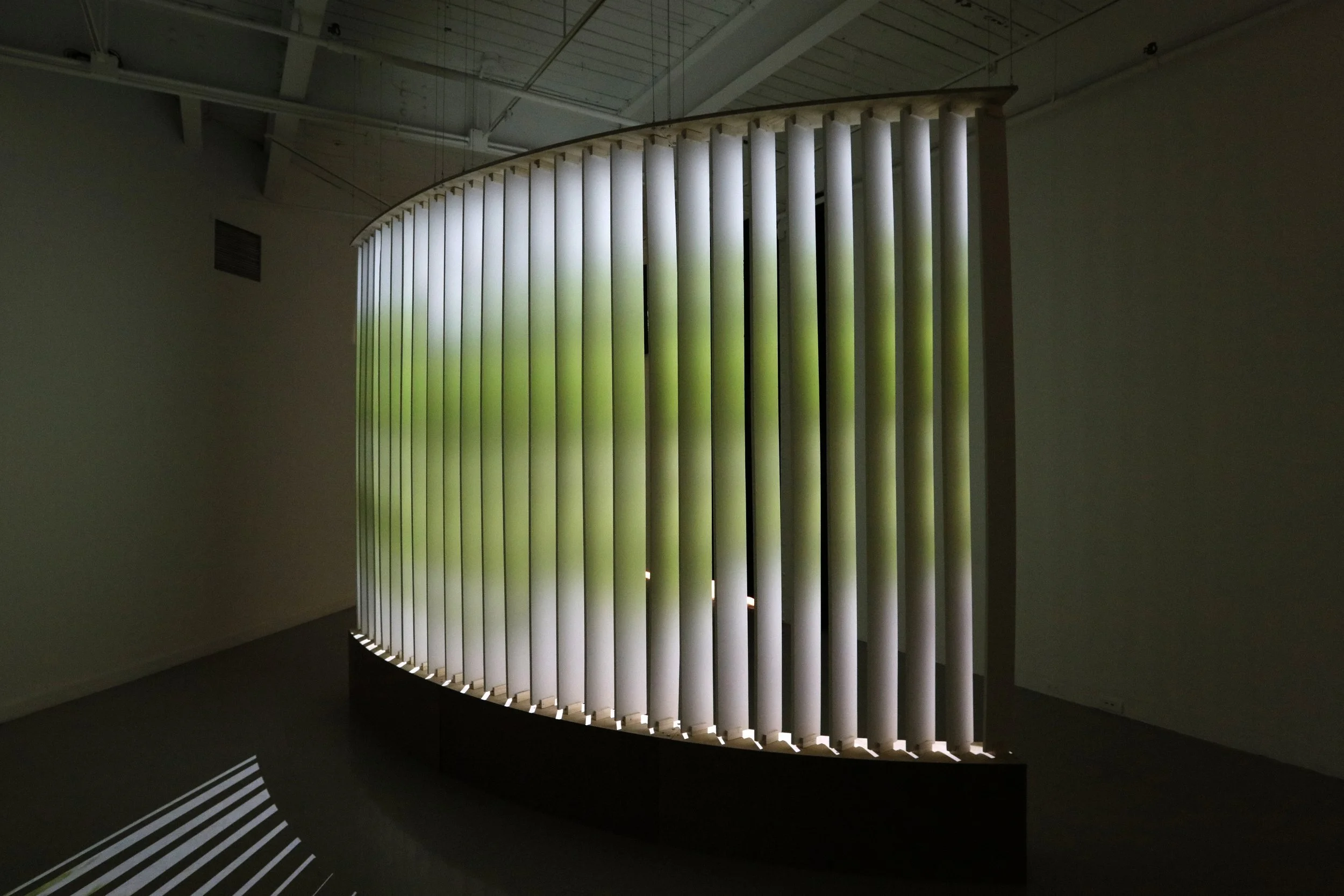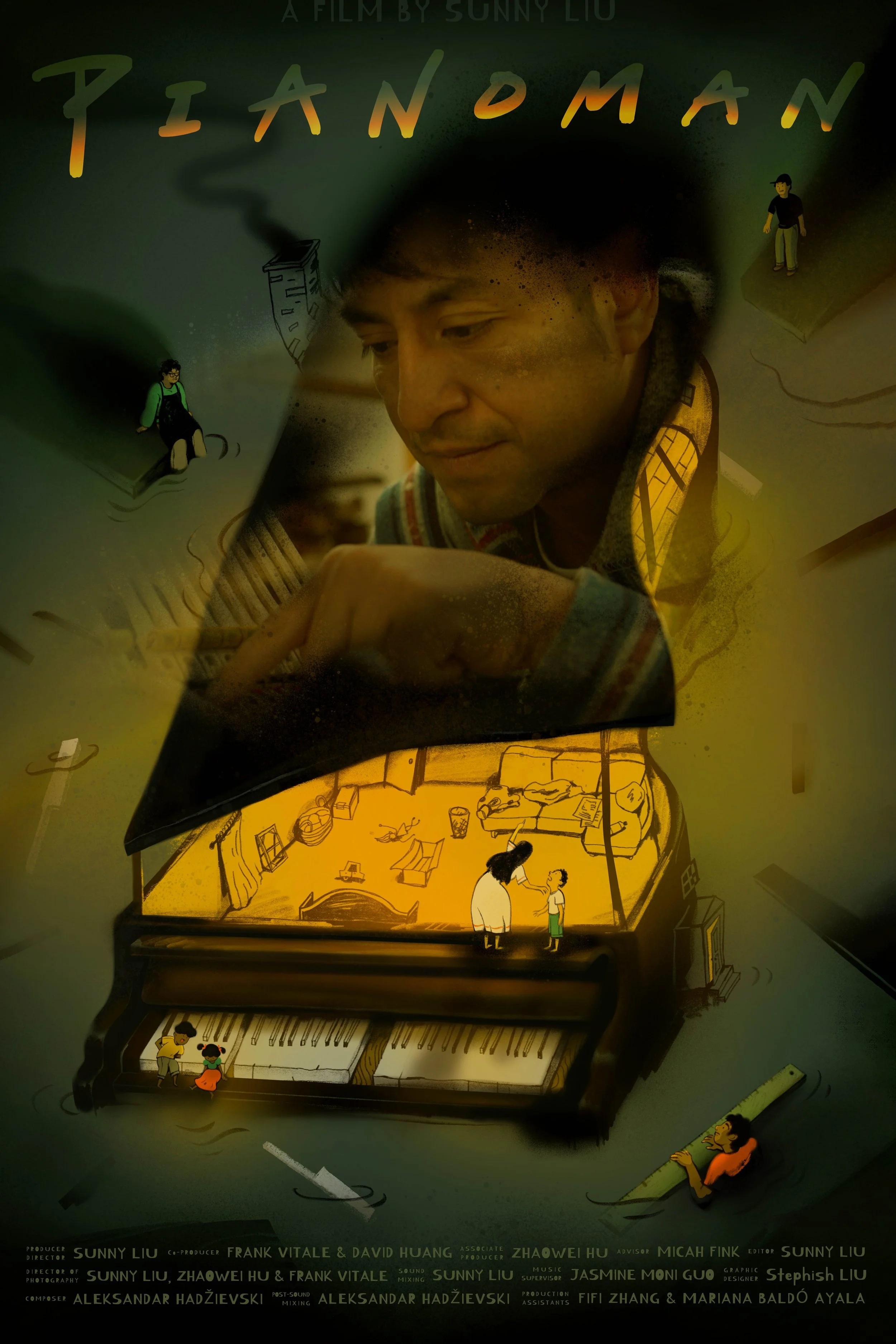10 Questions with Danni Zheng
Danni Zheng is a new media artist with a spatial design background, graduated from the Royal College of Art, and is currently based in London. Her work often explored the relationship between physical and virtual space by investigating the status quo and speculating the future in a digital way, such as through 3D animation, immersive experiences, live performances, and creative coding.
Danni Zheng - Portrait
Her recent work primarily focuses on future world-building, where nature, synthetic objects, and human intervention intertwine. She aims to inspire audiences to consider the possibilities of a sustainable and speculative environment through her work.
In her artistic practice, Danni has collaborated with sound artists, engineers, composers, and architects. Her works have been presented at Dyson Gallery in London, Menier Gallery in London, Willesden Gallery in London, Samsung KX in London, Fabrica Gallery in Brighton, HART in Hong Kong, and Tomorrow Maybe in Hong Kong.
Lost in Deep Blue (镜花水月), Immersive Interactive Experience, variable, 2020 © Danni Zheng
"Lost in Deep Blue" is an immersive interactive experience that invites audiences to engage with a virtual natural world. Created during a time of lockdown, when it can be difficult to appreciate the beauty of nature, this project seeks to offer a sense of peace and tranquillity through its use of the colour blue.
In this piece, the artist explores digital materials as a means of creating stunning visualizations, capturing the essence of blue as it is found throughout the deep sea, land, and outer space. The blue immersive space is designed to evoke feelings of peace, providing a temporary escape from the depression of solitude and offering a means of regulating emotions. Through this project, the artist invites audiences to explore the intersection of technology, colour, and nature, challenging their perceptions and inspiring new ideas.
INTERVIEW
First, tell us a little about your background and studies. What kind of education or training helped you develop your approach to art?
Well, I studied interior design in Beijing during my undergraduate. But in 2017 and 2018, I visited some new media art exhibitions in Beijing that combined art, light, fog, technology, sound, and spaces. As I stood there, a thought popped into my head, "Wow, that's super cool! Maybe I can create something like this too!" From that moment on, I started to learn about those emerging technologies and developed the idea of becoming a new media artist.
In 2019, I came to the Royal College of Art to pursue my master's degree in Information Experience Design. During that time, I explored various digital methods of creation, such as 3d animation, interactive projection mapping, and installation. In addition, I've enjoyed drawing since my childhood and have always had exposure to some art or painting-related skills. These experiences have also helped me develop my own style and approach to my artistic creation.
Mineral Wasteland, Digital Short Film, variable, 2021 © Danni Zheng
Mineral Wasteland focuses on the negative impacts of technological development on the natural environment and also depicts a post-human age wasteland in which digital entities will still exist on the earth but integrate with nature. It carries the memory of consumerism, modernism, and capitalism in the present Anthropocene.
At the end of 2020, humanmade stuff outweighed all life on earth. Advances in technology are actually the consumption of natural resources. However, recycling activities are unable to keep pace with the growth of e-waste. From raw mineral mining, manufacturing, shipping, and then to recycling, all processes generate toxic chemicals. They oxidize, corrode, and cause acid rain. The cycle repeats itself and generates new chemical compounds, such as sulfur oxides and nitrogen oxides, and acid rain again. Finally, they will evaporate, forming crystals and mineral wasteland.
Credits:
Sound - Suting Han
Voiceover – Huizhi Huang
Chemical Support – Weilun Xu
Special Thanks - Gian Luca Amadei
You are a versatile multidisciplinary artist working primarily with new media. How did you approach this subject? And why did you prefer new media over traditional ones, like painting or sculpture?
I think new media art is a combination of both technology and art. In the production process, it does require some effort in the technical aspect. Sometimes, you need to have a certain level of understanding of the technology to know the limits of what you can achieve with your work. However, I also believe that when creating new media art, it's important not to be completely dazzled by the cool effects that technology can provide. What's more important is the story your work is telling, the core of your work, and the overall aesthetics that you can achieve through a combination of visual, sound, and other elements.
While building a physical space often has limitations on regulations, virtual space allows for more freedom in creation. That is the reason why I chose new media and emerging technologies as my main creation tool. However, in my own projects, I also incorporate traditional elements, such as drawing and sculpture. For example, in "Lost in Deep Blue," I drew some flowers and then processed them digitally to create a fusion of traditional and digital art. In "Mineral Wasteland," I also did some crystalline objects during my research.
You also collaborate with several figures, like sound artists, engineers, composers, and architects. How do these collaborations help you develop your work?
When creating my art pieces, I often seek help from professionals in fields that I'm not familiar with because I want my works to have a strong scientific or technical basis. For example, in my project "Mineral Wasteland," I worked with a chemical engineer to conduct some chemical experiments, which helped to make the whole project more scientifically grounded. Similarly, in my film and audio-visual works, I have no background in music composition, so after creating the visual elements, I often have to find pre-existing music that fits my work, which can be challenging. Therefore, working with a composer or sound artist is a much better way to complete my projects. Also, for my ongoing project, which involves building a temporary physical space, I may need an architect to provide suggestions on the actual structural design. The purpose of the collaboration is to achieve a synergistic effect - the whole is greater than the sum of its parts.
Submerge, Audio-visual Performance, variable, 2022 © Danni Zheng
'Submerge' is a real-time audio-visual performance that reproduces sounds and sights from the ocean by integrating digital media and traditional compositions. The artist combines real-world images of the ocean in different weather and time of day and underwater creatures with synthetic water sounds, whale songs, and traditional classical music to present the natural, mysterious, fragile, and precarious ocean. Meanwhile, the artist also captures sound data in real-time to generate a dreamy, imaginary underwater world in the future. The combination of music and visuals allows the audience to experience the confrontation and coexistence between human and nature with multiple senses. The deep blue sound spectrum at the end of the piece takes the audience to the deepest part of the ocean and leads them to rethink their relationship with it.
Credits:
Composer - Suting Han
Submerge, Audio-visual Performance, variable, 2022 © Danni Zheng
What is your aim as an artist? What would you like the public to get away from your work?
Currently, as an artist, I simply want to pursue the themes and works that I love without catering to popular taste. There will always be an audience who appreciates my work. If these individuals derive joy from my work or gain new inspiration or insights through it, that would be a great outcome.
Let's talk about your creative process. Can you guide us through the process, from the first idea to the final product?
This may vary depending on the project. For speculative world-building, I begin by considering the worldview and imagining what the scene would look like. I combine historical research with real-world phenomena to help me conceive stories that might happen in the future. Due to my background in environmental design, I find it challenging to describe a complete story through storyboarding directly. Instead, I often create specific details after imagining the entire scene. For audio-visual works, sometimes, collaboration with a composer is crucial at the proposal stage to determine the project's theme, visual content, and music style.
Your statement says your aim is "to inspire audiences to consider the possibilities of a sustainable and speculative environment." In your opinion, what is the role of art in addressing such themes?
I think artistic practice can inspire audiences to think differently in some ways. They might think, "Oh, so the future can look like this," or they may reflect on their own lives after experiencing a particular scene. Art can raise questions without necessarily requiring answers but rather encourage people to care and spark new ideas. It is more about capturing the present or imagining a possible future through the present rather than creating an immediately producible product.
Is there any other medium or technique you would like to experiment with?
I want to try making glass. Another thing I want to try is kinetic laser and sound installation or light installation.
Let's talk about the future. What are you working on now, and what are your plans for the future? Anything exciting you can tell us about?
Currently, I work as an experience designer while also creating artwork as a new media or digital artist. Looking towards the future, I hope to have more opportunities for exhibitions and showcasing my work in different countries and cities. Of course, I would also like to receive more commercial commissions. Recently, I've been excited to receive some commissions that I enjoy working on.
What do you hope to accomplish this year, both in terms of career goals and personal life?
As for my career goals this year, I am mainly focused on completing the commissions I have received while also exploring various new methods of creation. In terms of my personal life, I always believe in going with the flow and having fun.
Finally, any shows, galleries, or publications where our readers can find your work?
If nothing unexpected happens, I will have a new immersive interactive experience on display in Shanghai in November 2023. Additionally, in January 2024, I will have an exhibition, artist talk, and audio-visual performance as a resident artist in Reykjavik, Iceland. This is a new collaborative project about ice.




















